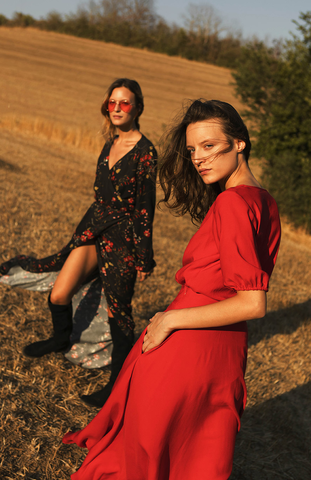The Importance of Cruelty Free Fashion

Today we are talking about an important topic closely related to sustainable fashion: cruelty free (or vegan) fashion. We will answer the most frequently asked questions, but if after reading the article you still have questions, please contact us, and we will be happy to answer your questions.
Check some of our most favourite cruelty free products for women:
What is Cruelty Free Fashion?
Cruelty free fashion does not use animal-based materials and we al know this. But not everyone knows, including vegans, that to define cruelty free fashion it is not enough to just buy products made with alternatives to animal-based materials.
Let's start with the basics - by cruelty free fashion we mean: clothing, shoes, bags, gloves, hats, belts, scarves, sunglasses, socks and ties.

Leaving aside for a moment bio materials (cotton, hemp, linen, rubber), usually alternatives to animal-based materials are synthetic, i.e. made in the laboratory with raw materials from oil industry waste. See polyurethane, polyester, microfiber.
Synthetic materials that are highly contaminating and therefore harmful to fauna and flora. Just think of industrial spills into water, into the atmosphere or more simply the release of microplastics from clothes we wash at home.
This is why we constantly say it is not enough to avoid purchasing animal-based materials to define our choice as "cruelty free" because buying a product made with these synthetic materials, and without any textile certification that is was produced with a small carbon footprint, is absolutely not a sustainable, ethical nor cruelty free choice.
Buying cruelty free fashion is a choice that can make a difference in the animal world as long as these products are also environmentally friendly. The use of animal-based materials is very widespread in fashion, although in recent years thanks to the great awareness campaigns launched by animal welfare associations, many fashion brands are switching to cruelty free in response to increasing customer demand.
Cruelty free fashion is often a marketing move, other times an ethical choice. But we're fine with it anyway. The important thing is to minimize the use of these materials:
- Feathers
- Furs
- Silk
- Leather
- Wool
We have listed them in order of importance and now we will explain why. Collecting feathers is terrible for the level of cruelty: they are torn out while the bird is alive, then they grow back, and they are torn again. The animal is then "raped" by man throughout his life.
Furs are undoubtedly cruel in every respect and contribute to the death of millions of animals every year. We need only to think of the intensive breeding of foxes and minks, but also rabbits and dogs.
Silk - although silkworms are considered "inferior" to other living creatures - is another of those materials to be abolished given the live extraction by boiling the silkworm.
Leather is less gory than the 3 materials mentioned above. We could consider it on a par with furs since we are talking about the same thing, but in this case we have to take note of the difference: the leather used to make bags, shoes, accessories, clothing, comes mostly from the zootechnical (food) industry where it is considered as a waste product.
This means that if it wasn't used in fashion it would be burned in incinerators. At this point it is clear that burning it would certainly be counterproductive for the environment.
Wool is a bit like skin, mostly coming from farms dedicated to the food industry. Animals bred need to be sheared to survive so, although it is by no means a cruelty free material, it is undoubtedly the lesser of two evils compared to other materials mentioned.
As it is particularly difficult to recognize cruelty free fashion from the eco-friendly or ethical fashion, at Slow Nature we are here to help you better understand the various textile certifications and teach you how to recognize green textiles: a key aspect when it comes to sustainable fashion.
.When Can We Call Fashion "Cruelty free?"
Fashion can be called cruelty free when it is made with alternatives to animal-based materials and at the same time has textile certifications guaranteeing this. The 4 most famous international labels (certifications) are:
- PETA
- Animal Free
- VeganOK
- FurFree
Discover More About Textile Certifications
PETA certification is named after the international animal rights organization itself. Animal Free Fashion and FurFree are two distinct projects sponsored by the association Anti Vivisection League (AVL). VeganOK takes its name from the same network dedicated to the vegan world. Although it is still very widespread in the food sector, little is seen in fashion.
These certifications, at least Animal Free and PETA, also evaluate the environmental impact of a company's production but maintain a form of self-certification. Fashion brands apply for them, send the documents requested by the organisations (materials, suppliers, production methods, chemical substances used, etc.), which will then be examined and the brand's request is possibly accepted.
Certified brands do not have to be 100% cruelty free, but they can only affix the certification label to products that reflect the requirements of the certification.
The environmental impact of these products is then assessed according to the materials and chemicals used. It is not a particularly effective verification system but it is still a good sign organisations are interested and understand that it is just not enough to exclude those 4/5 materials to protect the animal world but that a more is needed to reduce the environmental impact throughout the textile production chain.
We hope that these checks can be "tightened up" more and more, forcing fashion companies into what we call eco-sustainable textile innovation.
When we talk about cruelty free at the moment you should ideally choose bio-based materials for our clothing or accessories, i.e. materials that are biodegradable or compostable, natural textile fibers or synthetic materials of recycled origin. With plastic, for example, there is so much of it around that you can't imagine wasting or burning it. We would ideally collect it and reuse it at time after time, as if it were a primary resource.
Sure, we should stop producing new plastic but we hope that this "dream" will come true as soon as possible.
At the moment, however, we have several choices. What we call alternative materials to those of animal origin and which are also eco-friendly (low environmental impact):
- Piñatex (pineapple)
- Vegea (wine)
- Appleskin (apple)
- Ligneah (wood)
- Fruitleather (mango)
- Econyl
- Newlife
- Recyclable material
- Organic cotton
- Cavas/linen
- Cork/wood
- Natural rubber
Discover More About Eco-Friendly Fabrics
We have imitation fabrics derived from food waste (pineapple, apple, wine, mango). These materials are new innovations, but it is difficult to judge which is better than others as we have little statistical data offered by the manufacturers and no concrete scientific research that can demonstrate what the companies say.
We can play it safe with natural fibres like organic cotton, hemp, linen, rubber, wood and cork, which have a low carbon footprints and are considered socially responsible. But that is not always the case and we have to be careful. We have to be careful with the labels and get to know the brands that make the products.
Cruelty Free Fashion Online and in Shops
As a market that is still underdeveloped and sought after, several fashion brands have started going in this direction. Many are beginning this adventure by abandoning furs and then gradually replacing all animal-based materials. At least this should be the ultimate goal.
Though there are several brands that have adhered to these initiatives, it is still difficult to find products with these labels in stores. On the contrary, it is very easy to find them online.
We hope they can quickly appear "traditional" stores but this will depend on consumer demand. The greater the demand for certified cruelty free fashion, the greater the chances that fashion brands will change production.
Why Cruelty Free Fashion is Important
We believe that the answer to this question can be found in every line of this article: cruelty free fashion is important to protect the animal kingdom.
In recent years we have killed most of the animals in the wild, not to mention those on intensive farms. The textile industry is largely responsible for these tragic events, but unlike the food industry, fashion could well do without them. In the today's society, we are able to develop alternatives to animal-based materials thanks to science.
We are all growing more aware today, but not all of us are able to change our shopping habits.
Would you like to buy vegan products? Slow Nature is the right place to come as we offer an exclusive cruelty free fashion selection on our website.
or
Leave a comment
Comments will be approved before showing up.













